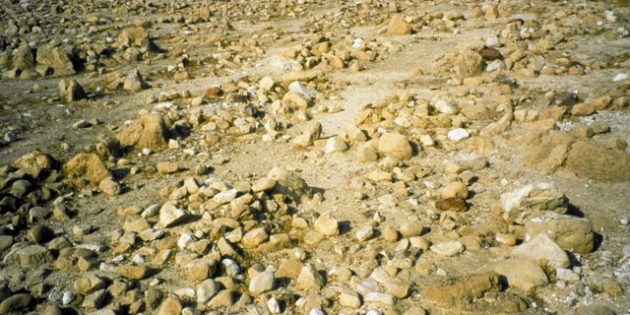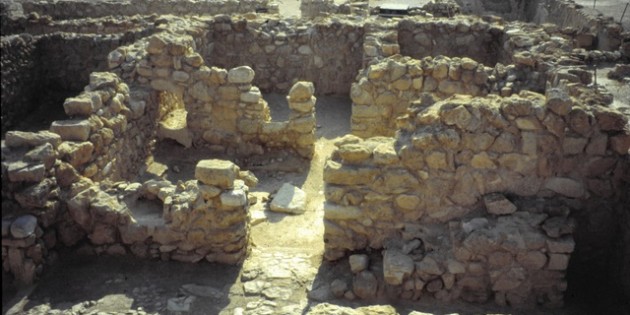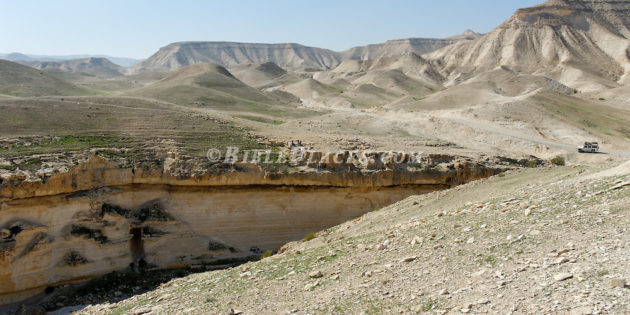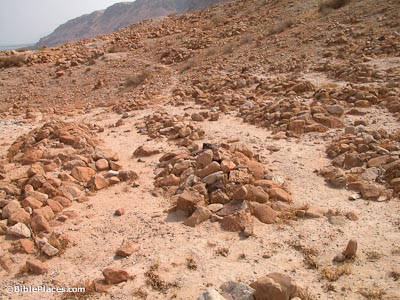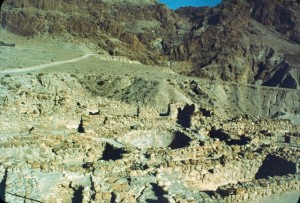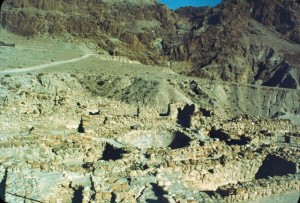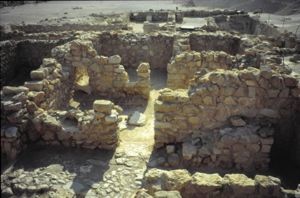Home » Dead Sea Scrolls » Excavation
Excavation
The Qumran settlement was equipped with a complex water system, which supported various industrial installations, especially for the making of pottery. Shown here is a remnant of the water channel, which in antiquity was covered by capstones and therefore was below floor level.
To the east of the Qumran ruins are the remains of a cemetery containing some 1100 graves. Only a small number were excavated, but a large proportion is graves of women and children.
This large room, located towards the southern end of the building complex, has been identified by excavators as a dining room. Adjacent to it was a pantry with a large number of dishes still neatly stacked when the site was destroyed. It is generally believed that the Qumran sectarians ate their communal meals in this […]
The ruins at Khirbet Qumran are of communal facilities – kitchen, dining room, etc. Today we still do not know where the living quarters were. Three possible locales have been suggested- nearby caves, tents, or the upper story of the building complex.
It remains for us to discuss two other locations that may have been satellite settlements of the main Qumran community. From the documents of the sect, especially the Zadokite Fragments, we learn that other such communities existed. In fact, it is generally assumed that sectarians in small numbers were scattered throughout the Land of Israel. […]
WADI MURABBAAT (M.R. 110185). At the end of November 1951 bedouin from the Judean desert began to bring fragments of manuscripts to Jerusalem. It was immediately clear that they did not come from Qumran, but it was only in January 1952 that the bedouin were persuaded to reveal their source. The documents came from a […]
Excerpted from The Dead Sea Scrolls Fifty Years After Their Discovery (ed. Lawrence H. Schiffman, Emanuel Tov and James C. VanderKam), Israel Exploration Society, Jerusalem 2000, p.661-667. The main cemetery of Qumran, located about 35 m. east of the settlement, contains about 1200 graves arranged in ordered, regular and neat rows, separated by two paths […]
If we are to reconstruct the history of the Qumran sect and its way of life, we must build upon the substantial archaeological evidence available to us from the settlement at Qumran, close to the caves where the scrolls were discovered. Almost all research on the scrolls confirms the conclusion reached by early investigators- that […]
QUMRAN, KHIRBET (M.R. 193127). A settlement near the NW shore of the Dead Sea which was associated with the people who produced the Dead Sea Scrolls. Although noted in various explorations of the area around the Dead Sea since 1851 (de Vaux 1953- 89), Khirbet Qumran attracted the attention of archaeologists only because of the […]
The Site Virtually all of the Dead Sea Scrolls research points to a connection between the ruins at Qumran and the scrolls found in the caves. This has been established by the correspondence between the dating of the scrolls and the dating of the archaeological remains. For this reason, researchers believe that study of the […]


